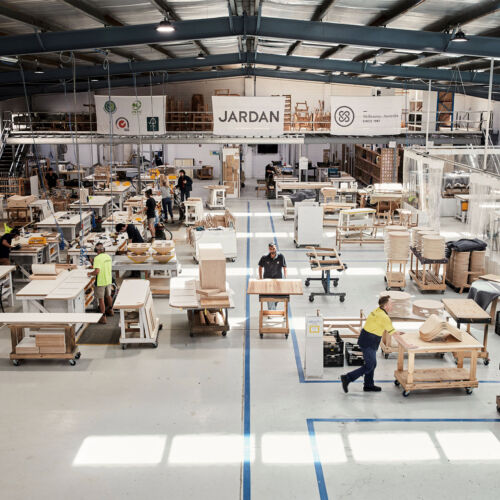Background and circular economy
Starting in 1994, Interface manufactures flooring products that are carbon neutral across the full lifecycle and has a re-entry carpet take-back program that provides end-of-first-life solutions through reuse and reprocessing into new products.
Interface focuses on optimal use, and value retention to place themselves on the circular economy value hill. They demonstrate a championing level of maturity in the circular economy (25/25). They have adopted approaches including process monitoring, stakeholders awareness and education, and formalising an environmental management system.
Drivers for circular economy adoption
The founder's personal values and passion for sustainability and his objective to lead the industry for sustainability drove them to adopt the circular economy model. Externally, market demand for easy ways to reduce the environmental impact provided an opportunity for a competitive edge.
Circular economy practices adopted
- Carbon neutral across the product life cycle
- Tracing supply chains for sustainable supply
- Australian manufacturing
- Designing out material waste
- Reducing energy waste
- Design of long-lasting products
- Recycling takeback
Company changes with the adoption of circular economy
Interface adopted the circular economy model from the inception, to eliminate the negative impact on the environment. They are the first global flooring manufacturer to sell all products as carbon neutral across their full life cycle.
Barriers and challenges
Barriers and challenges include:
- Higher product costs due to extra processes and less production efficiency
- Return of products incurs high transport costs
- Problematic reverse logistics and leaving carbon footprints
- Customers unpreparedness to pay a premium for an environmentally friendly product
- Inconsistency in policy and regulatory standards across the country
Critical success factors for circular economy
Critical success factors include:
- Vision and commitment of the founder
- Circularity built-in at all stages
- Persistence in the circular journey
- Willingness to educate the workforce
- Openness to learn about circularity advances
- Collaboration with suppliers
- Changing customer mindset via education and engagement
Benefits of adopting a circular economy
Key benefits internally are that they have been able to grow the company and have become an employer of choice in a competitive market. They have developed and retained a customer base, gained a competitive edge. Interface aims to reduce dependence on overseas suppliers by continuing to scale up their circular economy model.



